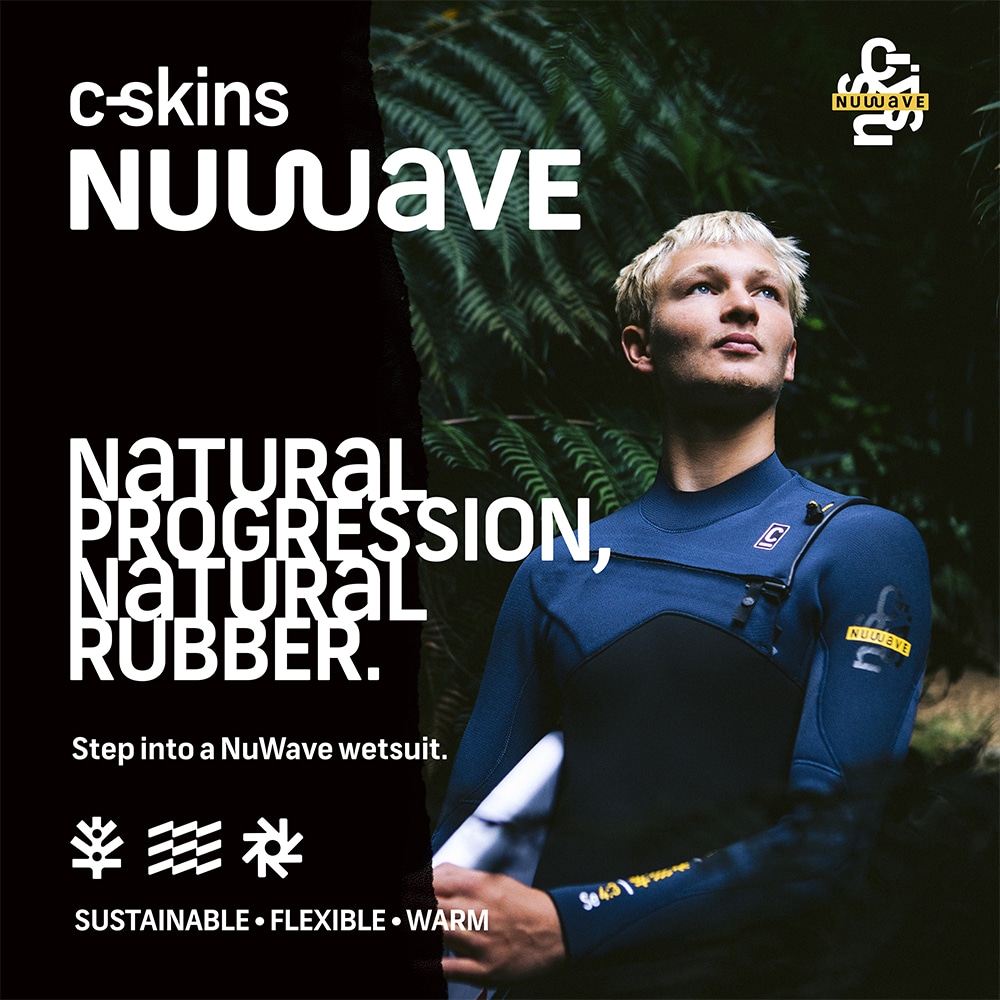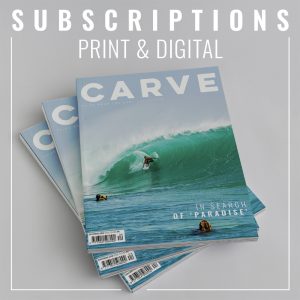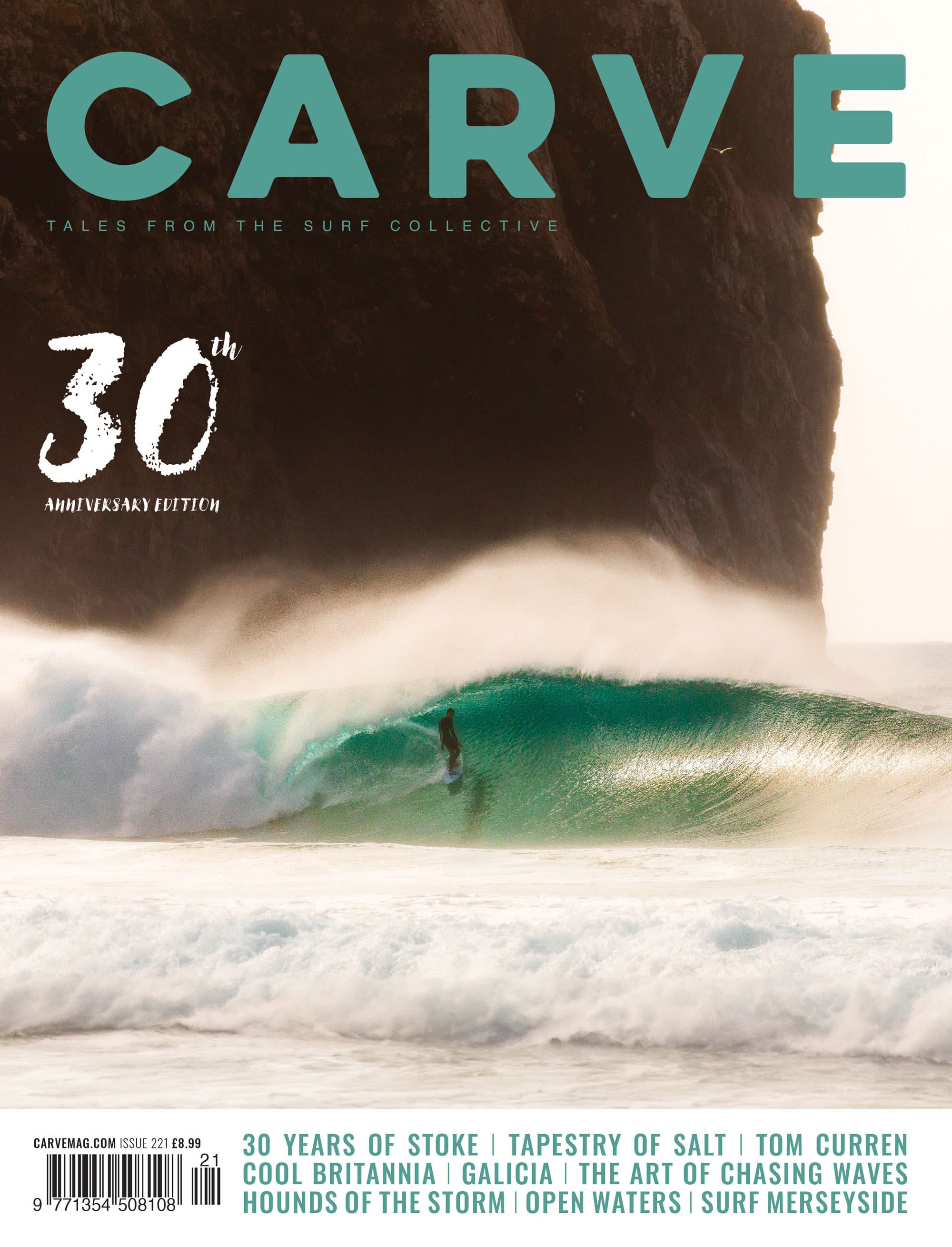Plastic Planet

Around 1990 I met a young photographer, Andy Hughes. At the time I was involved in a very heavy eco campaign called Surfers Against Sewage. I collected all the condoms and sanitary towels strewn all over Porthtowan, we bought shares in South West Water, and fellow SAS’ers Chris Hines and Mike Hendy went to the shareholders meeting and dumped them on the doorstep with a “I believe these are yours”. It was a rambunctious, hard hitting time.
Meanwhile Andy, also involved in SAS, had a different tack. He was taking photos, determined to make difference by highlighting the plastic pollution on beaches through art. He spent years taking photos across many coastlines, then in 2006 his Carson designed book called ‘Dominant Wave Theory’ including essays by world leading scientists was released. He had written to David Attenborough in 2004 asking him to contribute, but got a polite refusal.
Fast forward to 2018 and the ‘Attenborough affect’ has taken ocean pollution to the forefront of politics. Good time then to catch up with Andy and find out why he was so ahead of the curve, and get his views on all things plastic.

When did you first notice beach debris? And how did your first book come about?
Probably around 1987, but it was in 1989 when I focused my attention very specifically towards plastic in the sea and washed up on the beach. It was whilst I was an art student in Cardiff, South Wales that a young Cornishman called Dean, suggested I try surfing. One of the nearest breaks was at Porthcawl, Rest Bay. There were many grey overcast days, bobbing up and down in the sea, sitting astride on a blue Tris twin fin 5’8”, looking out across the bay to the Port Talbot steelworks. In 1989 I moved to London to study photography at the Royal College of Art. Often I would return to South Wales. On one occasion, returning from a surf trip to Rest Bay I stopped at the beach at Barry Island. It was there that I spotted a very brightly coloured plastic object. Like a magpie I was attracted to it, it was a detergent bottle with a visually striking graphic emblazoned on its upturned surface ‘Radion’. Using a brand new Fuji6x9 camera I made my picture. My neural networks made a connection between the word and the lurid, supersaturated colours. At this time my mum was receiving treatment for a brain tumour, I made a connection between the typography, the subject and its colour. I noticed visual similarities. Radiation used on a human brain to kill tumour cells and the wasted plastic bottle containing a seemingly simple product, detergent to wash away dirt, appeared connected. Of course, nothing is ever washed away, there is no away. There is no over there, away from here, everything goes somewhere. Maybe not in the same form, but everything that exists is connected. From this moment, this picture was the start of a series of works that visualised surfing, surfers, and waste.

How was it accepted? What was the atmosphere like around then?
In the early ‘90s I had a telephone call from the Tate, regarding the new gallery that was due to open in St Ives. I’d already met Chris Hines and others from Surfers Against Sewage on their first demo in London. I believe someone at the Tate had asked them if they knew any artists who surfed, and the Tate invited me down to Cornwall. An opportunity to come live and work in Cornwall was too good to resist. I moved to St Ives in 1993, where I took up an arts residency, then I found a job teaching photography and stayed in Cornwall. Porthmeor was my home break, I loved it. I was working teaching full time and continuing to make work, when 1996 I bought myself a Hasselblad camera and started making new photographs. These were very close-up, in a square format: the subject was all the washed-up plastic and rubbish on the beaches between St Ives and Porthtowan. Between 1996 and 2004 I specifically set about photographing washed up beached plastic. I made trips to the very far north of Scotland, up to Thurso and along the far northern British coastal fringes. I also visited Los Angeles and met a surfer called Joe from Surfrider USA, he took me all around the coast of LA. One particular stand out memory was when we both sneaked through a fence at Palos Verdes, running across Donald Trump’s golf course, all in order to find a particular trashy spot on the beach. In 2004 I sent a letter about my work to publisher in London, a very well-known one. Booth Clibborn Edition publishes the work of many leading figures in art and design, Damien Hirst, Rankin, Saatchi are just a few. At the first meeting with Edward-Booth Clibborn he agreed to publish my book of photographs. I made contact with various scientists, environmental advocates, and writers, including David Attenborough. I also contacted David Carson who agreed to design the book for me. Everything seemed to just drop into place. The book was published in 2006 with a USA co-edition published with Abrams in New York.

Was anyone doing this type of work before you?
That’s a great question! Had I titled the book something less esoteric I believe the book might have surfaced earlier in the debate about the ocean, plastic waste, and other associated topics. Calling the book ‘Dominant Wave Theory’ might not have been my best choice. I guess many who read Carve will recognise at least the first two words. Originally I’d thought about a title such as ‘Average Wave Period’ or ‘Dominant Wave Period’, my thinking was to connect the title with the mathematical systems we use to measure swell and wave heights. In 2006 when the book came out, there was no Facebook, Twitter and the web was still not as pervasive as it is now, so the title might not have reached a wide audience as much as I’d hoped. But it is a well-referenced book, and I often receive emails from people all over the planet asking me about it. If one searches for the book on Google – hey presto, it pops up as number one. I remember my publisher telling me how a book is a ‘slow burner’. It’s a decade since I made that book and much has now changed. Plastic has risen to the top of the political agenda. It is really fascinating that when I first met Dr. Richard Thompson (leading expert on ocean plastic) he showed me some beauty products that contained micro-plastics, that was in 2005! It’s taken quite a while for this to find its way into the public debate about plastic, it’s about 13 years! Over the last 10 years, my book has surfaced and attracted attention in many ways. It has resulted in many invitations to speak in public, appear in the media, create and exhibit the work in galleries and take part in many great conversations. Whether making work at the Glastonbury festival, traveling to a remote Alaskan wilderness and connecting with a grizzly bear or talking to kids at a climate change conference, it’s because of that book. It has had a rhizomatic effect on my current work and that of others too. Interestingly in the late ‘90s and early 2000s, there were various people and organisations discussing plastic and also other waste pollutants. In the ‘80s in Australia, there was a group called POOO which stood for People Opposed to Ocean Outfalls, this small activist group included surfers, they campaigned for a change in the way effluents were being discharged into the sea near Bondi beach. Recently I had a message from a well-known campaigner who called me the ‘Godfather’ of plastic rubbish imagery. It made me chuckle, if my memory serves me right, and I have a good memory, I think many just thought I was a bit eccentric all those years ago. Always talking about plastic and making photographs and artwork about it. It’s interesting to now hear about those who I knew many, many years ago now have set up successfully groups campaign for plastic free zones or collecting beach trash. Well, I suppose it not that weird seeing how debates change, I think I certainly was ahead of the curveball, perhaps this sounds a bit self-congratulatory, maybe. In terms of art there is a long history of trash and the discarded being central to contemporary art. There’s Robert Rauschenberg who in the early ‘50s explored the boundaries and the definition of art, following from the radical modernist precedent set by Marcel Duchamp. Marcel Duchamp took a urinal and displaced it, then titled it Fountain. It is one of my favourite works of art. Many artists have explored the lines between painting, sculpture, and photography through the assemblages of traditional materials and the detritus of everyday life. Hans Haacke, created a work of art called Monument to Beach Pollution in 1970. This rubbish installation was sited and photographed at Carboneras in Spain. Many artists have picked over the detritus of capitalist circulation and I see myself as one of a continuing stream that is getting fuller and faster flowing as each decade unfolds. Of course over the last few years, as the visible nature of plastic has increased along with social media and apps such as Instagram, it has become easier to point a lens to such material and comment about it. I’m not sure that it’s art, there’s a distinction to be made between art, advocacy and work which is purely didactic. A large whale made of out plastic bottles driving around the UK might be a great way to engage a mass audience and create PR, but it’s not art. I know it’s not meant to be, but often I get engaged with people in discussion about art and art for change etc. it’s a complex polemic that can get feisty sometimes.

What have you been doing since then?
Over last ten years or so I have published other books and zines. I have been invited to many great events such as the San Sebastian Surf Film festival as well as co-curating a series of photo exhibitions in Cornwall as also participating in many other exhibitions international. I continue to support Surfers Against Sewage and have over the last ten years supplied a great many images for various campaigns such as the Marine Litter Report and various campaigns about helping to reduce plastic usage. I’m also an affiliated artist with the Plastic Pollution Coalition alongside other noted artists who work with plastic as a material. In 2013 I was invited with two other artists and a group of world class scientists on an expedition to the remote Alaskan coast. A book, film, and exhibition took place and toured the USA. It was an amazing adventure and started me exploring new ideas about the subject. I expect to be able to make a public announcement about two other project that I’ve been working on. One is a funded project that will enable me to create a creative art film to be shown in 2019/20. The other involves a trip to Japan where I’ll be making new work for a book, documentary film, and exhibition leading up to the Japan 2020 Olympics. I’d also say over the last few years I’ve taken to reading much more, this in turn has fostered a deeper kind of thinking about the subject. I’m very interested in looking at how philosophers and political thinkers might change my own perception of the subject and in turn the work I produce. In particular, I’m drawn to the ideas of Timothy Moreton’s ecological theories such as Dark Ecology as well as texts by Gilles Deleuze, the French philosopher, and Félix Guattari, the French psychiatrist, and political activist.

Where is the worst place you have been?
Another good question, in terms of waste and plastic I’d say going to a supermarket such as Tesco and attempting to choose products without plastic is pretty top on my list. I realise you’re thinking somewhere more exotic? Last year I was in Mauritius with fishers on a boat floating above a coral reef, amazing people and a great privilege to be there, but when I saw the state of the reef it almost brought me to tears. In Alaska in 2013, I wandered in the bright sunshine along a remote beach, I found large plastic five-gallon containers that had been chewed by bears. On the same day, I sat only a few meters from a female grizzly and her three cubs. For over 40 mins I was both transfixed and terrified, beauty and terror together, a sublime moment. So in one sense it was the worst but also one of the best experiences of my life to date!

How do you feel now the Attenborough effect has pushed the issue into the worldwide mainstream?
In 2004 I wrote to Attenborough asking him to write for my book, I had nice letter returned but with a polite refusal. I thought it was a good gesture to reply and explain his reasons. Fifteen years later I was pleased to see the focus shift and the way in which the subject of human waste including plastic is centre stage. A few months ago I sent him a copy of my book, and got a great letter back. I think the Blue Planet has made a terrific difference and that’s great. But I’m curious about the changes we can make, given ‘deep time’ we have no choice but to change. We often see in the media and on social media calls to ‘save the ocean’ and ‘save the planet’. It’s the human race that we need to save without destroying our one home and the home of all other life upon it. Perhaps the ocean and the planet will be fine after the human race has left the stage? Does this seem too depressing, it’s not meant to be – the world is very, very beautiful and as many surfers will know there’s nothing better than riding a wave in the ocean. For me, it’s not chasing endless surf, travel to exotic places, I’m happy watching the sun flicker through the back of a nice wave at Godrevy. Art and philosophy can heighten that awareness and in turn foster love and care for the spaces we live in now, that’s what I feel is important. To see the beauty in everything, even a tower of trash at Glastonbury within an inherent beauty, its speaks to us if you care to listen.

What are the most innovative solutions you have seen over the years?
In 2004 Greg Garrad wrote a book titled ‘Ecocriticism’ it explored the ways in which we imagine and portray the relationship between humans and the environment in all areas of cultural production. In it, he describes four positions with which people often align to. One is the Cornucopian, a type of thinking that ascribes that capitalism can mobilise us to solve pressing problems through problem-solving, the market, technological advances etc. Nature is valued in the sense that it is valuable to us, to us as human beings. So the question proposes that there is a solution, from a huge floating platform at sea to bottle deposit schemes. I think the simplest solution is the best, a bit like smoking, let’s stop using it wherever possible. It’s worth noting that technology can help us or hinder us. If one watches some of the early films made in the ’40s and ’50s promoting plastic as a wonder material it will make you laugh or perhaps cry. My favourite solution is what the Plastic Pollution Coalition proposes: that is ‘refuse’ plastic. I think moves forward in behaviour can generate the best results the quickest rather than retro or reverse engineering the planet. It’s hard to keep abreast, trainers made out of sea plastic and other similar products for me are simply examples of ‘blue-washing’, especially if the company extolling virtuous values have little history in ecological issues. There are others who do and are making moves forward, brands like Ecover have a long history of active design and product manufacturing. I’m looking forward to buying ice-cream in a cardboard pack like I did as a child, you can even cut through the box to get a good slice! Perhaps even milk being delivered in a glass bottle, now there’s a good idea, any takers?
Given the widespread nature of the pollution, and that it is in the food chain, do you think we can still save ourselves and the planet, or is it too late?
For myself and for others I think that taking the time to explore the subject and read and consider how others are talking and making progress is key. Each new day brings new discoveries and ways of approaching plastic and waste. Today I heard about a supermarket in Amsterdam launched a plastic-free shopping aisle, I thought to myself, that’s so Dutch. Forward thinking, liberal and creative exploration is key. These questions from Carve have made me think some more about personal histories, experiences, and futurology. In botany, a rhizome is a modified subterranean stem of a plant that sends out roots and shoots, from complex entanglements one can find meaning. Twenty-five years ago I sat floating in a brown turgid sea full of poo and plastic, seems a bit crazy, not so now, it’s shaped and formed my artistic and creative life. In Britain today we have less poo in the sea, we can have less plastic too, and not just at sea but everywhere for all life and all over the globe.
For more of Andys work check out
www.andyhughes.net




